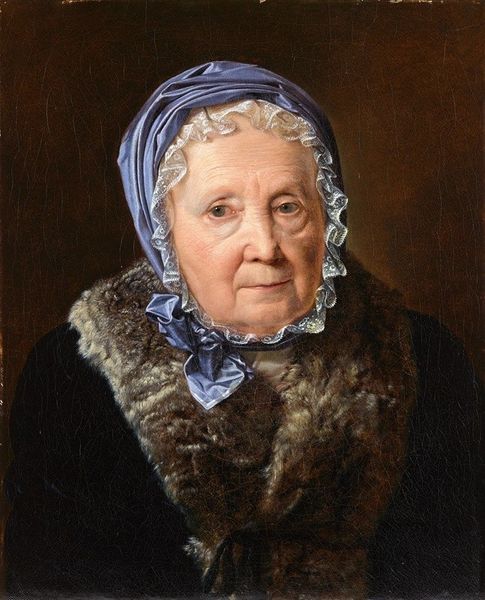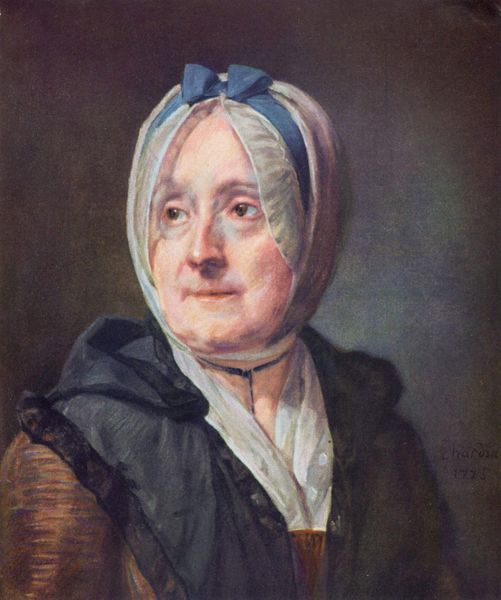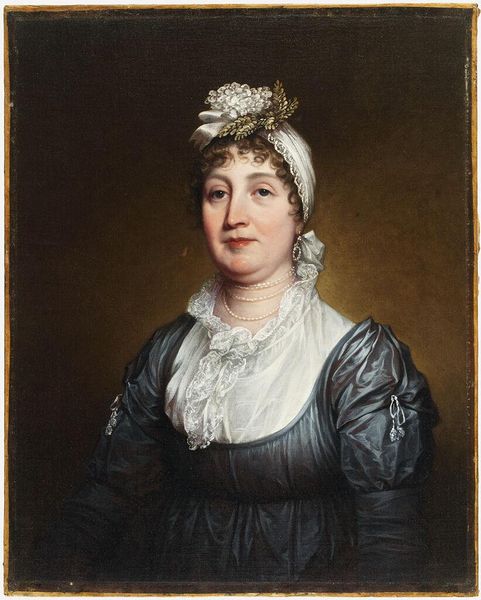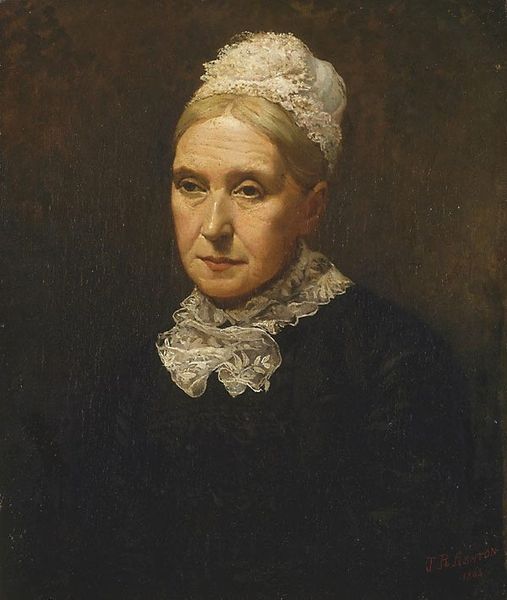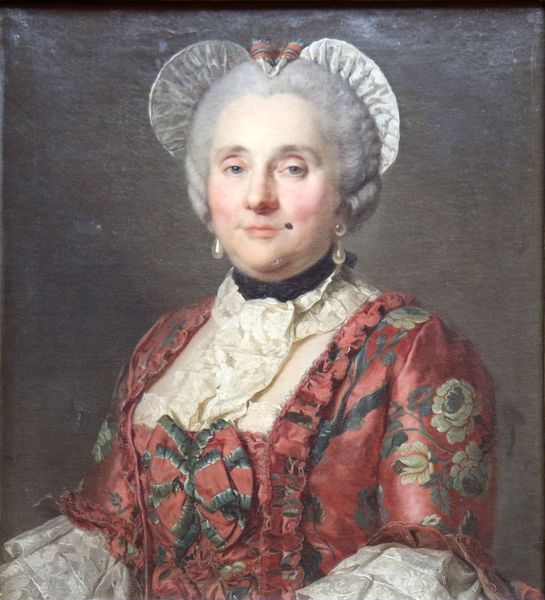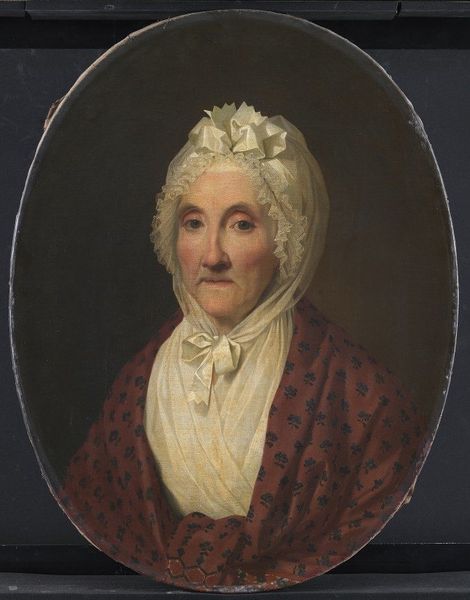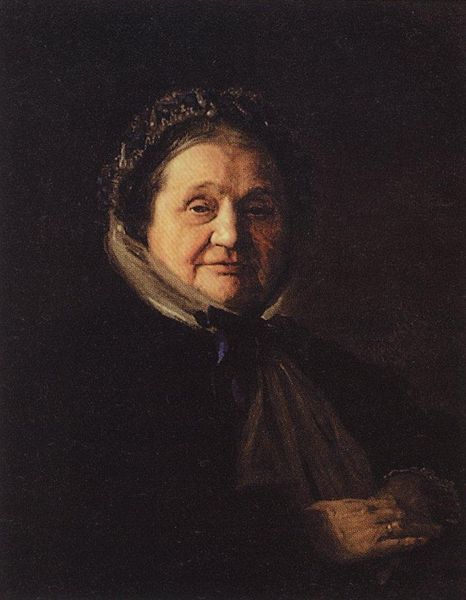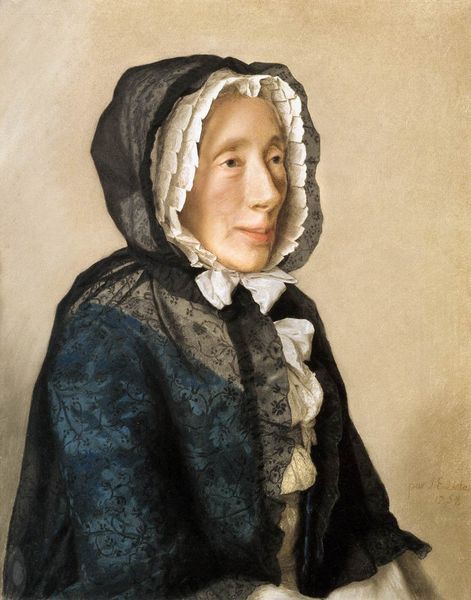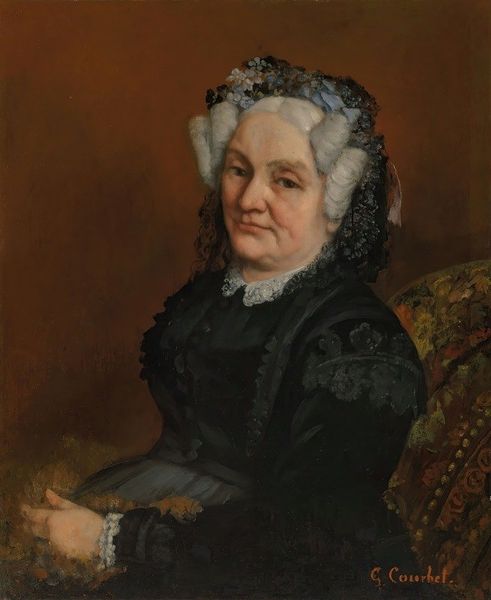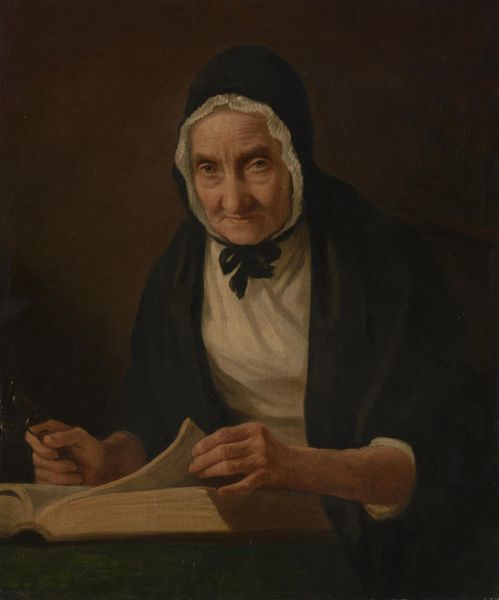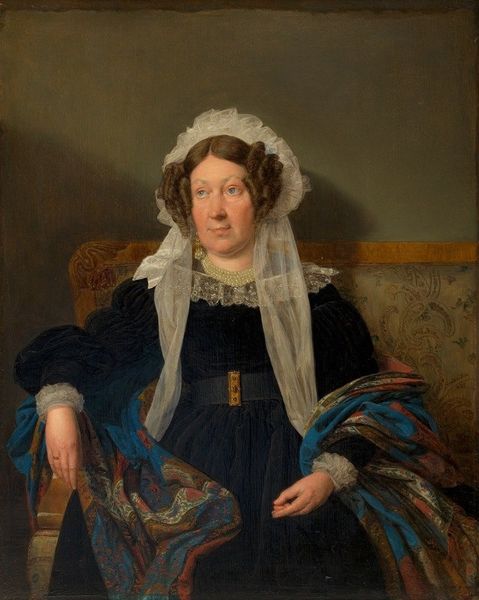
painting, oil-paint
#
portrait
#
baroque
#
painting
#
oil-paint
#
rococo
Copyright: Public domain
Curator: Here we have Jean-Étienne Liotard’s "Portrait of Marthe Marie Tronchin" from 1758, an oil painting now housed at the Art Institute of Chicago. What do you make of her? Editor: Immediately, I’m struck by her warmth, actually. Not the setting, which looks quite formal, but her gaze—a certain serenity in her eyes. Almost a hint of mischief. I wonder what she's thinking. Curator: Interesting, given her social position, and the clear visual cues to status presented via attire. Look at the detail afforded to rendering the fur trim and velvet of her robe. Then contrast the rendering of her lace collar. Liotard certainly made material choices. The value ascribed to the robe’s components – fur, textile dyes, imported textile know-how… it tells its own story about mercantile and cultural capital in that time. Editor: Oh, absolutely, and the fur trim really catches the light, doesn't it? Making it appear especially luscious. It's practically tactile. Still, she seems more approachable than someone in a fancy painting probably *should* be. It could also be the softness with which the oil paint has been applied—almost like looking at a pastel drawing. Curator: Yes, I see your point. Liotard was renowned for his mastery with pastels; an expertise he subtly carried over to the use of oil paint here perhaps? That softer rendering style could serve to subtly mediate class display and more sensitively convey human features. This sensitivity can also be traced to other paintings in the Rococo style from that time. Editor: And her hands are absent! Which also speaks volumes in their absence. No signifiers of labour or of religious performance... She has quite an appealing, confident, and subtly amused look about her too— I can only imagine her wit. The Tronchin family, for example, played such an influential part in Voltaire finding sanctuary near Geneva. Imagine the conversations she'd have overheard. Curator: Indeed. Thinking about how that background political-economic activity becomes absorbed and transformed in this portrait really highlights the layered, embodied nature of even the most seemingly straightforward artwork. The social circulates via pigment and is expressed by its maker through material use and distribution. Editor: It’s fascinating how the textures and light interact, creating an experience far beyond what meets the eye. The details embedded within make a two-dimensional surface feel as if it contains layers of time and societal interaction within it, ready for us to unpack.
Comments
No comments
Be the first to comment and join the conversation on the ultimate creative platform.
